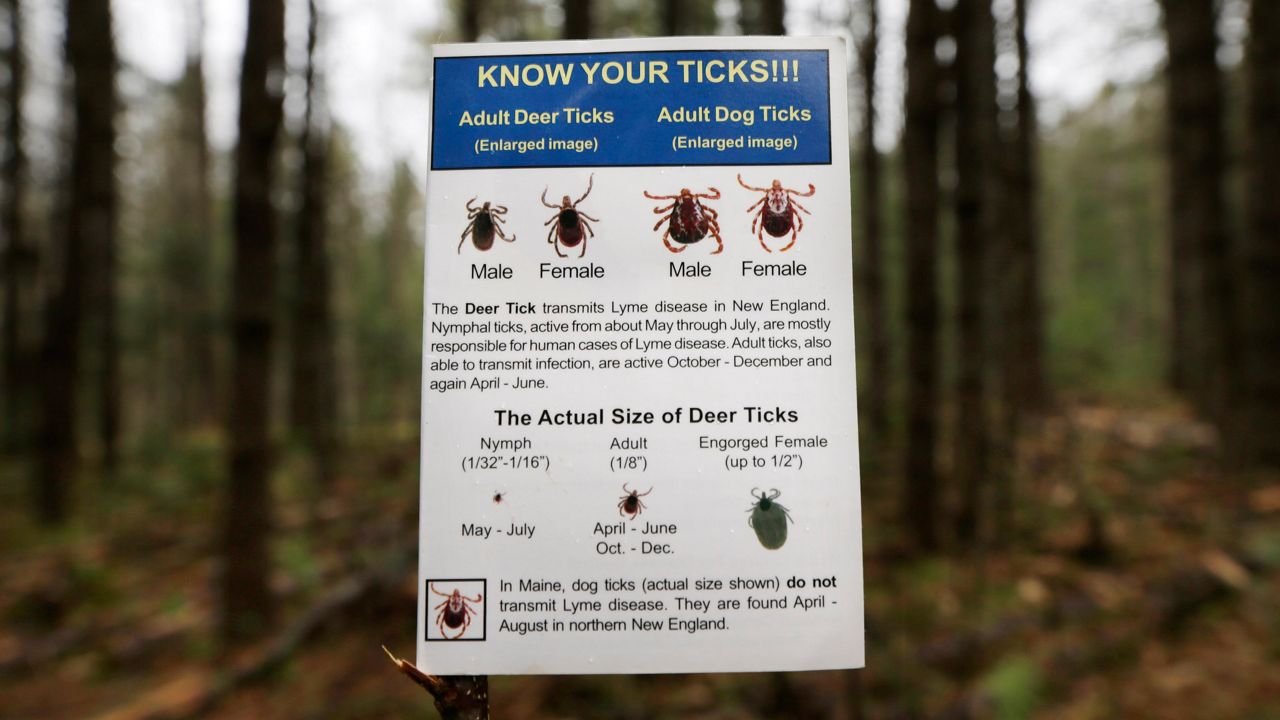Ohio — Health officials are cautioning that Lyme disease, once rare in Ohio, is increasingly becoming a concern in eastern counties.
What You Need To Know
- Lyme disease cases are rising in Ohio, according to the latest data
- Counties in eastern parts of Ohio report the most cases in the state
- Humans and animals can contract Lyme disease from ticks in Ohio
So far in 2021, 484 Lyme disease cases have been reported among Ohio residents, which is already a record surpassing the 468 cases reported in 2019, according to Ohio Department of Health data.
Lyme disease cases have been rising in Ohio for years. In the early ‘90s, a dozen or two cases would be reported annually, and it wasn’t until 2014 that the state reported more than 100 cases in a year.
Disease surveillance data shows that residents of Jefferson, Harrison, Belmont and Columbiana counties, who are near West Virginia and Pennsylvania borders, are contracting Lyme disease at the highest rates in Ohio, Jefferson County Health Commissioner Andrew Henry said in an interview.
“As you go west in Ohio, Lyme disease becomes a lot less prevalent, but our area, being so close to the Mid-Atlantic, we’re hit hard by Lyme disease,” he said. “We are definitely really, really heavy in positive case rates.”
Jefferson County has documented 28 confirmed cases in 2021 and 178 probable or suspected cases, which occur when a physician diagnoses Lyme disease based on symptoms, Henry said.
As to why cases are rising, Henry said officials don’t know exactly, but he noted that the disease seems to be seeping east into Ohio. Pennsylvania reported the most Lyme disease cases of U.S. states in 2019, the most recent year for which national data is available from the Centers for Disease Control and Prevention.
Lyme disease is spread in Ohio from blacklegged ticks, which tend to habitat in wooded, brushy areas, according to the Ohio Department of Health.
Illness in humans can begin anywhere from three days to a month after the exposure, with possible symptoms, including a “bulls eye” rash around the bite, headache, fever, chills, muscle pain, joint pain and fatigue, according to ODH. The disease is typically treated with oral antibiotics making it rarely fatal, but Lyme disease can be serious if it's not detected promptly.
Children ages 5 to 14 contract the disease at the highest rates because they spend the most time outdoors, especially in the summer months when Lyme disease is most common, Henry said. But cases are recorded in every month of the year in Ohio and anyone spending time outdoors, regardless of age, should be cautious, he said.
With the disease becoming more common, health officials recommend residents of at-risk counties take precautions, namely checking for ticks. Residents are also encouraged to use insect repellent, as well as pesticides, and remove tick-friendly environments from their properties, like leaf litter or tall grass, Henry said.
“As long as people are doing the right precautions and making sure that they're checking their children for ticks and checking themselves, folks should be OK,” he said.
Dogs should also be checked for ticks after possible exposure, and owners should make sure their pets are up-to-date on their shots, which could include the Lyme disease vaccine.



